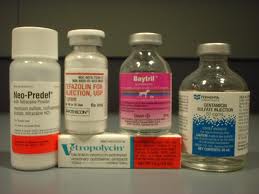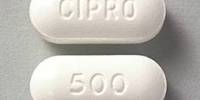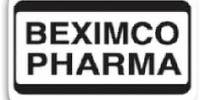Introduction:
Antibiotics may be defined as the sub-group of anti-infective that are derived from bacterial sources and are used to treat bacterial infections.An antibiotic may be classified basically as “narrow-spectrum” or “broad-spectrum” depending on the range of bacterial types that it affects. Narrow-spectrum antibiotics are active against a selected group of bacterial types. Broad-spectrum antibiotics are active against a wider number of bacterial types and, thus, may be used to treat a variety of infectious diseases.
Uses Of Narrow Spectrum Antibiotics:
Narrow spectrum antibiotics are used for the specific infection when the causative organism is known.
Advantages Of Narrow Spectrum Antibiotics:
- The narrow-spectrum antibiotic will not kill as many of the normal microorganisms in the body as the broad spectrum antibiotics. So, It has less ability to cause superinfection.
- The narrow spectrum antibiotic will cause less resistance of the bacteria as it will deal with only specific bacteria.
Disadvantages Of Narrow Spectrum Antibiotics:
- Narrow spectrum antibiotics can be used only if the causative organism is identified.
- If you don’t choose the drug very carefully, the drug may not actually kill the microorganism causing the infection.
Narrow Spectrum Antibiotics:
- Azithromycin
- Clarithromycin
- Clindamycin
- Erythromycin
- Vancomycin
Azithromycin:
Azithromycin is a azalide, a subclass of macrolide antibiotic.
Indication:
Bacterial infections,those causing,
- middle ear infections,
- tonsillitis,
- throat infections,
- laryngitis,
- bronchitis,
- pneumonia,
- Typhoid,
- sinusitis.
- Urinary tract infections
Presentation:
| Azithromycin | Dry Powder Suspension | 100mg |
| Azithromycin | Tablets | 250mg, 500mg |
| Azithromycin | Lyophilised Injection | 500mg |
Clarithromycin:
Clarithromycin is a macrolide antibiotic which works by interfearing with the protein synthesis of the bacteria.
Indication:
- Pharyngitis,
- Tonsillitis,
- Acute maxillary sinusitis,
- Acute bacterial exacerbation of chronic bronchitis,
- Pneumonia,
- Skin structure infections
Presentation:
| Clarithromycin | Tablets | 250mg, 500mg |
CLINDAMYCIN:
Clindamycin is lincosamine antibiotic.
Clindamycin has a bacteriostatic effect. It is a bacterial Protein synthesis inhibitor. It does so by binding preferentially to the 23S subunit of the bacterial 50s ribosome.
Indication:
- Clindamycin is used primarily to treat infections caused by susceptible anaerobic bacteria, including infections of the respiratory tract, skin and soft tissue infections, and peritonitis
- In patients with hypersensitivity to penicillins, clindamycin may be used to treat infections caused by susceptible aerobic bacteria as well.
- It is also used to treat bone and joint infections, particularly those caused by Staphylococcus aureus.
Presentation:
| Clindamycin | Injection | 300mg/2ml, 600mg/4ml |
| Clindamycin + Benzoyl Peroxide | Gel | 1% + 5% |
ERYTHROMYCIN:
Erythromycin is a Macrolide antibiotic.
Mechanism Of Action:
Erythromycin is a bactericidal.Erythromycin inhibit protein synthesis by binding to the 23S rRNA molecule (in the 50S subunit) of the bacterial ribosome blocking the exit of the growing peptide chain of sensitive microorganisms.
Indication:
- Acute Bacterial Sinusitis,
- Acute Otitis Media Infection,
- Acute Streptococcal Pyogenes Bacterial Sinusitis,
- Acute Streptococcus Pneumoniae Bacterial Sinusitis,
- Bacterial Pneumonia,
- Chlamydia Cervicitis,
- Chlamydial Conjunctivitis,
- Chlamydia Trachomatis Urethritis,
- Diphtheria, Diphtheria Prevention,
- Listeriosis,
- Mycoplasmal Pneumonia,
- Neonatal Pneumonia,
- Nongonococcal Urethritis,
- Pertussis,
- Pharyngitis due to Streptococcus Pyogenes,
- Pneumococcal Pharyngitis
- Skin Infections
Presentation:
| Erythromycin | Tablets | 125mg, 250mg, 500mg |
VANCOMYCIN:
Vancomycin is a glycopeptide antibiotic. Vancomycin is used for the treatment of infection caused by Gram-positive bacteria.
Indication:
- Pseudomembranous enterocolitis caused by C. difficile,
- Serious MRSA Infection,
- Enterococcal endocarditis,
- Penicillin resistant pneumococcal infections,
- Infections caused by diphtheroids.
Presentation:
| Vancomycin | Lyophilised Injection | 500mg, 1g |
Products on narrow spectrum antibiotics:
| Active Ingrediant | Form | Strength | Pack Type | Packing Style |
| Azithromycin | Dry Powder Suspension | 100mg | Sachet | 10’s |
| Azithromycin | Tablets | 250mg, 500mg | Blister | 10’s |
| Azithromycin | Lyophilised Injection | 500mg | Vial | 10ml Vial |
| Clarithromycin | Tablets | 250mg, 500mg | Blister | 10’s |
| Clindamycin | Injection | 300mg/2ml, 600mg/4ml | Ampoule | 2ml, 4ml |
| Clindamycin + Benzoyl Peroxide | Gel | 1% +5% | Tube | 45g |
| Erythromycin | Tablets | 125mg, 250mg, 500mg | Blister | 10’s |
| Vancomycin | Lyophilised Injection | 500mg, 1g | Vial | 10ml, 20ml Vial |
Ref: http://www.srspharma.com/narrow-spectrum-antibiotics.htm
http://www.srspharma.com/broad-spectrum-antibiotics
Type of Activity Antibiotics:
Bactericide Antibiotic:
A bactericide or bacteriocide is a substance that kills bacteria and, ideally, nothing else. Bactericides are disinfectants, antiseptics or antibiotics.
The most used disinfectants are those applying
- active chlorine (i.e., hypochlorites, chloramines, dichloroisocyanurate and trichloroisocyanurate, wet chlorine, chlorine dioxide etc.),
- active oxygen (peroxides, such as peracetic acid, potassium persulfate, sodium perborate, sodium percarbonate and urea perhydrate),
- iodine (iodpovidone (povidone-iodine, Betadine), Lugol’s solution, iodine tincture, iodinated nonionic surfactants),
- concentrated alcohols (mainly ethanol, 1-propanol, called also n-propanol and 2-propanol, called isopropanol and mixtures thereof; further, 2-phenoxyethanol and 1- and 2-phenoxypropanols are used),
- phenolic substances (such as phenol (also called “carbolic acid”), cresols (called “Lysole” in combination with liquid potassium soaps), halogenated (chlorinated, brominated) phenols, such as hexachlorophene, triclosan, trichlorophenol, tribromophenol, pentachlorophenol, Dibromol and salts thereof),
- cationic surfactants, such as some quaternary ammonium cations (such as benzalkonium chloride, cetyl trimethylammonium bromide or chloride, didecyldimethylammonium chloride, cetylpyridinium chloride, benzethonium chloride) and others, non-quaternary compounds, such as chlorhexidine, glucoprotamine, octenidine dihydrochloride etc.),
- strong oxidizers, such as ozone and permanganate solutions;
- heavy metals and their salts, such as colloidal silver, silver nitrate, mercury chloride, phenylmercury salts, copper sulfate, copper oxide-chloride etc. Heavy metals and their salts are the most toxic and environment-hazardous bactericides and therefore their use is strongly oppressed or canceled.
- properly concentrated strong acids (phosphoric, nitric, sulfuric, amidosulfuric, toluenesulfonic acids) and
- alkalis (sodium, potassium, calcium hydroxides),such as of pH < 1 or > 13, particularly under elevated temperature (above 60°C), kills bacteria.
Bactericidal antiseptics:
As antiseptics (i.e., germicide agents that can be used on human or animal body, skin, mucoses, wounds and the like), few of the above mentioned disinfectants can be used, under proper conditions (mainly concentration, pH, temperature and toxicity toward humans and animals). Among them, some important are
- properly diluted chlorine preparations (f.e. Daquin’s solution, 0.5% sodium or potassium hypochlorite solution, pH-adjusted to pH 7 – 8, or 0.5 – 1% solution of sodium benzenesulfochloramide (chloramine B)), some
- iodine preparations, such as iodopovidone in various galenics (ointment, solutions, wound plasters), in the past also Lugol’s solution,
- peroxides as urea perhydrate solutions and pH-buffered 0.1 – 0.25% peracetic acid solutions,
- alcohols with or without antiseptic additives, used mainly for skin antisepsis,
- weak organic acids such as sorbic acid, benzoic acid, lactic acid and salicylic acid
- some phenolic compounds, such as hexachlorophene, triclosan and Dibromol, and
- cation-active compounds, such as 0.05 – 0.5% benzalkonium, 0.5 – 4% chlorhexidine, 0.1 – 2% octenidine solutions.
Others are generally not applicable as safe antiseptics, either because of their corrosive or toxic nature.
Bactericidal antibiotics:
Bactericidal antibiotics kill bacteria; bacteriostatic antibiotics slow their growth or reproduction.
Antibiotics that inhibit cell wall synthesis: the Beta-lactam antibiotics (penicillin derivatives (penams), cephalosporins (cephems), monobactams, and carbapenems) and vancomycin.
Also bactericidal are daptomycin, fluoroquinolones, metronidazole, nitrofurantoin, co-trimoxazole, telithromycin.
Aminoglycosidic antibiotics are usually considered bactericidal, although they may be bacteriostatic with some organisms
Ref: http://en.wikipedia.org/wiki/Bactericide
Bacteriostatic antibiotics:
Bacteriostatic antibiotics limit the growth of bacteria by interfering with bacterial protein production, DNA replication, or other aspects of bacterial cellular metabolism.
Bacteriostatic antibiotics inhibit growth and reproduction of bacteria without killing them; killing is done by bactericidal agents. Bacteriostatic agents must work with the immune system to remove the microorganisms from the body. However, there is not always a precise distinction between them and bactericides; high concentrations of some bacteriostatic agents are also bactericidal, whereas low concentrations of some bacteriocidal agents are bacteriostatic.
This groupincludes
- Tetracyclines
- Sulphonamides
- Spectinomycin
- Trimethoprim
- Chloramphenicol
- Macrolides
- Lincosamides
Tetracycline antibiotics:
Tetracyclines are a group of broad-spectrum antibiotics whose general usefulness has been reduced with the onset of bacterial resistance. Despite this, they remain the treatment of choice for some specific indications.
They are so named for their four (“tetra-”) hydrocarbon rings (“-cycl-”) derivation (“-ine”). To be specific, they are defined as “a subclass of polyketides having an octahydrotetracene-2-carboxamide skeleton”. They are collectively known as “derivatives of polycyclic naphthacene carboxamide”.
Therapeutic uses:
Tetracyclines are generally used in the treatment of infections of the respiratory tract, sinuses, middle ear, urinary tract, and intestines, and is used in the treatment of gonorrhoea, especially in patients allergic to β-lactams and macrolides; however, their use for these indications is less popular than it once was due to widespread resistance development in the causative organisms.
Their most common current use is in the treatment of moderately severe acne and rosacea (tetracycline, oxytetracycline, doxycycline, or minocycline).
Doxycycline is also used as a prophylactic treatment for infection by Bacillus anthracis (anthrax) and is effective against Yersinia pestis, the infectious agent of bubonic plague. It is also used for malaria treatment and prophylaxis, as well as treating elephantiasis.
Tetracyclines remain the treatment of choice for infections caused by chlamydia (trachoma, psittacosis, salpingitis, urethritis, and L. venereum infection), Rickettsia (typhus, Rocky Mountain spotted fever), brucellosis, and spirochetal infections (borreliosis, syphilis, and Lyme disease). In addition, they may be used to treat anthrax, plague, tularemia, and Legionnaires’ disease.
They may have a role in reducing the duration and severity of cholera, although drug-resistance is occurring, and their effects on overall mortality is questioned.
Tetracycline derivatives are currently being investigated for the treatment of certain inflammatory disorders.
Side effects:
Side-effects from tetracyclines are not always common, but of particular note is possible photosensitive allergic reaction that increases the risk of sunburn under exposure to UV light from the sun or other sources. This may be of particular importance for those intending to take on vacations long-term doxycyline as a malaria prophylaxis.
They may cause stomach or bowel upsets, and, on rarely occasions, allergic reactions. Very rarely, severe headache and vision problems may be signs of dangerous secondary intracranial hypertension, also known as pseudotumor cerebri.
Tetracyclines are teratogens due to the likelihood of causing teeth discolouration in the fetus as they develop in infancy. For this same reason, tetracyclines are contraindicated for use in children under 8 years of age. They are, however, safe to use in the first 18 weeks of pregnancy.
Some patients taking tetracyclines require medical supervision because they can cause steatosis and hepatotoxicity.
Cautions:
Tetracyclines should be used with caution in those with liver impairment and those that are soluble in water and urine worsen renal failure (this is not true of the lipid soluble agents doxycycline and minocycline). They may increase muscle weakness in myasthenia gravis and exacerbate systemic lupus erythematosus. Antacids reduce the absorption of all tetracyclines, and dairy products reduce absorption greatly for all but minocycline.
The breakdown products of tetracyclines are toxic and can cause Fanconi Syndrome, a potentially fatal disease affecting proximal tubular function in the nephrons of the kidney. Prescriptions of these drugs should be discarded once expired.
It was once believed that tetracycline antibiotics impair the effectiveness of many types of hormonal contraception. Recent research has shown no significant loss of effectiveness in oral contraceptives while using most tetracyclines. Despite these studies, many physicians still recommend the use of barrier contraception for people taking any tetracyclines to prevent unwanted pregnancy.
Contraindications:
Tetracycline use should be avoided in pregnant or lactating women, and in children with developing teeth because they may result in permanent staining (dark yellow-gray teeth with a darker horizontal band that goes across the top and bottom rows of teeth), and possibly affect the growth of teeth and bones.
In tetracycline preparation, stability must be considered in order to avoid formation of toxic epi-anhydrotetracyclines.
Mechanism of action:
Tetracycline antibiotics are protein synthesis inhibitors, inhibiting the binding of aminoacyl-tRNA to the mRNA-ribosome complex. They do so mainly by binding to the 30S ribosomal subunit in the mRNA translation complex.
Tetracyclines also have been found to inhibit matrix metalloproteinases. This mechanism does not add to their antibiotic effects, but has led to extensive research on chemically modified tetracyclines or CMTs (like incyclinide) for the treatmet of rosacea, acne, and various types of neoplasms.[10][11] Since incyclinide was announced to be ineffective for rosacea in September 2007, no drugs of this group will be marketed in the near-future.
Mechanism and resistance:
Tetracycline inhibits cell growth by inhibiting translation. It binds to the 16S part of the 30S ribosomal subunit and prevents the amino-acyl tRNA from binding to the A site of the ribosome. The binding is reversible in nature.
Cells become resistant to tetracycline by at least three mechanisms: enzymatic inactivation of tetracycline, efflux, and ribosomal protection. Inactivation is the rarest type of resistance, where an acetyl group is added to the molecule, causing inactivation of the drug. In efflux, a resistance gene encodes a membrane protein that actively pumps tetracycline out of the cell. This is the mechanism of action of the tetracycline resistance gene on the artificial plasmid pBR322. In ribosomal protection, a resistance gene encodes a protein that can have several effects, depending on what gene is transferred. Six classes of ribosomal protection genes/proteins have been found, all with high sequence homology, suggesting a common evolutionary ancestor.
Administration:
When ingested, it is usually recommended that the more water-soluble, short-acting tetracyclines (plain tetracycline, chlortetracycline, Oxytetracycline, demeclocycline and methacycline) be taken with a full glass of water, either two hours after eating, or two hours before eating. This is partly because most tetracyclines bind with food and also easily with magnesium, aluminium, iron, and calcium, which reduces their ability to be completely absorbed by the body. Dairy products, antacids, or preparations containing iron are particularly recommended to be avoided near the time of taking the drug. Partial exceptions to these rules occur for doxycycline and minocycline, which may be taken with food (though not iron, antacids, or calcium supplements). Minocycline, can be taken with dairy products because it does not chelate calcium as readily, although dairy products do decrease absorption of minocycline slightly.
Examples of tetracyclines:
According to source:
- Naturally occurring
- Tetracycline
- Chlortetracycline
- Oxytetracycline
- Demeclocycline
- Semi-synthetic
- Doxycycline
- Lymecycline
- Meclocycline
- Methacycline
- Minocycline
- Rolitetracycline
According to duration of action:
- Short-acting (Half-life is 6-8 hrs)
- Tetracycline
- Chlortetracycline
- Oxytetracycline
- Intermediate-acting (Half-life is ~12 hrs)
- Demeclocycline
- Methacycline
- Long-acting (Half-life is 16 hrs or more)
- Doxycycline
- Minocycline
- Tigecycline
Tigecycline may also be considered a tetracycline antibiotic, though it is usually classified as a glycylcycline antibiotic.
Trimethoprim:
Trimethoprim (INN) is a bacteriostatic antibiotic mainly used in the prophylaxis and treatment of urinary tract infections.
It belongs to the class of chemotherapeutic agents known as dihydrofolate reductase inhibitors. Trimethoprim was formerly marketed by GlaxoSmithKline under trade names including Proloprim, Monotrim and Triprim; but these trade names have been licensed to various generic pharmaceutical manufacturers. In clinical use it is often abbreviated TRI or TMP; its common laboratory abbreviation is W.
Mechanism action of Trimethoprim:
Trimethoprim acts by interfering with the action of bacterial dihydrofolate reductase, inhibiting synthesis of tetrahydrofolic acid. Tetrahydrofolic acid is an essential precursor in the de novo synthesis of the intermediate Thymidine monophosphate (dTMP), precursor of DNA metabolite Thymidine triphosphate. Bacteria are unable to take up folic acid from the environment (i.e. the infection host) and are thus dependent on their own de novo synthesis. Inhibition of the enzyme starves the bacteria of nucleotides necessary for DNA replication causing, in certain circumstances, cell lethality due to thymineless death. This drug was developed by George H Hitchings and collaborators, who shared the Nobel Prize for Physiology or Medicine in 1988 for the discovery of antifolates.
Co-trimoxazole:
Trimethoprim was commonly (since 1969 in the UK) used in a 1:5 combination with sulfamethoxazole, a sulfonamide antibiotic, which inhibits an earlier step in the folate synthesis pathway (see diagram below). This combination, also known as co-trimoxazole, TMP-sulfa, or TMP-SMX, results in an in vitro synergistic antibacterial effect by inhibiting successive steps in folate synthesis. This claimed benefit was not seen in general clinical use.
The combinations use has been declining due to reports of sulfamethoxazole bone marrow toxicity, resistance and lack of greater efficacy in treating common urine and chest infections, and side effects of antibacterial sulfonamides. As a consequence, the use of co-trimoxazole was restricted in 1995 following the availability of trimethoprim (not in combination) in 1980.
With its greater efficacy against a limited number of bacteria, Co-trimoxazole remains indicated for some infections; for example, it is used as prophylaxis in patients at risk for Pneumocystis jirovecii pneumonia (e.g. AIDS patients and those with some hematological malignancies) and as therapy in Whipple’s disease. Gram positive bacteria are generally or moderately susceptible.
Clinical indications:
Trimethoprim, used as monotherapy (since 1980 in the UK), is indicated for the prophylaxis and treatment of urinary tract infections. (Co-trimoxazole, with its greater efficacy against a limited number of bacteria, remains indicated for some infections).
Contraindications and reactions:
Use of trimethoprim is contraindicated during pregnancy, especially the first trimester, and for sufferers of certain blood disorders.[10] It may be involved in a reaction similar to disulfiram when alcohol is consumed after it is used, particularly when used in combination with sulfamethoxazole.[11][12] Trimethoprim can also reduce clearance of creatinine at renal tubules. Additionally, it can also lead to a sometimes dangerously low level of thrombocytes (cells that help blood clot) by lowering folic acid levels and associated bone marrow blood cell formation. Use in EHEC infections may lead to an increase in expression of Shiga toxin.
Chloramphenicol:
Chloramphenicol (INN) is a bacteriostatic antimicrobial. It is considered a prototypical broad-spectrum antibiotic, alongside the tetracyclines.
Chloramphenicol is effective against a wide variety of Gram-positive and Gram-negative bacteria, including most anaerobic organisms. Due to resistance and safety concerns, it is no longer a first-line agent for any indication in developed nations, although it is sometimes used topically for eye infections. Nevertheless, the global problem of advancing bacterial resistance to newer drugs has led to renewed interest in its use. In low-income countries, chloramphenicol is still widely used because it is inexpensive and readily available.
The most serious adverse effect associated with chloramphenicol treatment is bone marrow toxicity, which may occur in two distinct forms: bone marrow suppression, which is a direct toxic effect of the drug and is usually reversible, and aplastic anemia, which is idiosyncratic (rare, unpredictable, and unrelated to dose) and generally fatal.
Spectrum of activity of Chloramphenicol:
Because it functions by inhibiting bacterial protein synthesis, chloramphenicol has a very broad spectrum of activity: it is active against Gram-positive bacteria (including most strains of MRSA), Gram-negative bacteria and anaerobes. It is not active against Pseudomonas aeruginosa, Chlamydiae, or Enterobacter species. It has some activity against Burkholderia pseudomallei, but is no longer routinely used to treat infections caused by this organism (it has been superseded by ceftazidime and meropenem). In the West, chloramphenicol is mostly restricted to topical uses because of the worries about the risk of aplastic anaemia.
Therapeutic uses of Chloramphenicol:
The original indication of chloramphenicol was in the treatment of typhoid, but the now almost universal presence of multi-drug resistant Salmonella typhi has meant that it is seldom used for this indication except when the organism is known to be sensitive. Chloramphenicol may be used as a second-line agent in the treatment of tetracycline-resistant cholera.
Because of its excellent BBB penetration (far superior to any of the cephalosporins), chloramphenicol remains the first choice treatment for staphylococcal brain abscesses. It is also useful in the treatment of brain abscesses due to mixed organisms or when the causative organism is not known.
Chloramphenicol is active against the three main bacterial causes of meningitis: Neisseria meningitidis, Streptococcus pneumoniae and Haemophilus influenzae. In the West, chloramphenicol remains the drug of choice in the treatment of meningitis in patients with severe penicillin or cephalosporin allergy and GPs are recommended to carry intravenous chloramphenicol in their bag. In low income countries, the WHO recommend that oily chloramphenicol be used first-line to treat meningitis.
Chloramphenicol has been used in the U.S. in the initial empirical treatment of children with fever and a petechial rash, when the differential diagnosis includes both Neisseria meningitidis septicaemia as well as Rocky Mountain spotted fever, pending the results of diagnostic investigations.
Although unpublished, recent research suggests that chloramphenicol could also be applied to frogs to prevent their widespread destruction from fungal infections. Chloramphenicol has recently been discovered to be a life-saving cure for chytridiomycosis in amphibians. Chytridiomycosis is a fungal disease, blamed for the extinction of one-third of the 120 frog species lost since 1980.
Adverse effects of Chloramphenicol:
Aplastic anemia:
The most serious side effect of chloramphenicol treatment is aplastic anaemia. This effect is rare and is generally fatal: there is no treatment and there is no way of predicting who may or may not get this side effect. The effect usually occurs weeks or months after chloramphenicol treatment has been stopped and there may be a genetic predisposition. It is not known whether monitoring the blood counts of patients can prevent the development of aplastic anaemia, but it is recommended that patients have a blood count checked twice weekly while on treatment. The highest risk is with oral chloramphenicol (affecting 1 in 24,000–40,000) and the lowest risk occurs with eye drops (affecting less than 1 in 224,716 prescriptions).
Thiamphenicol is a related compound with a similar spectrum of activity that is available in Italy and China for human use, and has never been associated with aplastic anaemia. Thiamphenicol is available in the U.S. and Europe as a veterinary antibiotic, and is not approved for use in humans.
Bone marrow suppression:
It is common for chloramphenicol to cause bone marrow suppression during treatment: this is a direct toxic effect of the drug on human mitochondria. This effect manifests first as a fall in hemoglobin levels and occurs quite predictably once a cumulative dose of 20 g has been given. This effect is fully reversible once the drug is stopped and does not predict future development of aplastic anaemia.
Leukemia:
There is an increased risk of childhood leukemia as demonstrated in a Chinese case-controlled study, and the risk increases with length of treatment.
Possible Related Adverse Effects Chloramphenicol is particularly toxic to people sensitive to benzene based preservatives like preservatives 210 and 211. Chloramphenicol poisoning can cause sensitivity reactions to organic acids and salicylates. Chloramphenicol is also known to cause tinnitus and balance problems through inner ear damage. It also causes folic acid depletion resulting in adverse effects to the thyroid, pituitary and prostate through effects on PABA levels. There may also be links to chronic lymphocytic leukemia(CLL) through folic acid “depletion” and resultant high levels of folic acid in the mutant lymphocytes that characterize CLL Chloramphenicol stops the body’s production of vitamin D and pregnenolone. This results in major hormone depletion, including DHEA and testosterone, that can result in death and also lowers the body’s resistance to viral infection. Chloramphenicol can cause testes pain, possibly through hormone effects. Chinese research shows that chloramphenicol affects motor neurones. It also affects insulin Igf1 levels and glutamate levels. Both of these conditions are considered indicative of a type of motor neurone disease. The adverse genetic effects of chloramphenicol are considered heritable.
Gray baby syndrome
Intravenous chloramphenicol use has been associated with the so called gray baby syndrome. This phenomenon occurs in newborn infants because they do not yet have fully functional liver enzymes (i.e. UDP-glucuronyl transferase), and so chloramphenicol remains unmetabolized in the body. This causes several adverse effects, including hypotension and cyanosis. The condition can be prevented by using chloramphenicol at the recommended doses and monitoring blood levels.
Macrolide:
The macrolides are a group of drugs (typically antibiotics) whose activity stems from the presence of a macrolide ring, a large macrocyclic lactone ring to which one or more deoxy sugars, usually cladinose and desosamine, may be attached. The lactone rings are usually 14-, 15-, or 16-membered. Macrolides belong to the polyketide class of natural products.
Members of Macrolide:
US FDA-approved :
- Azithromycin – unique, does not inhibit CYP3A4
- Clarithromycin
- Dirithromycin
- Erythromycin
- Roxithromycin
- Telithromycin
Not US FDA-approved:
- Carbomycin A
- Josamycin
- Kitasamycin
- Midecamycin/midecamycin acetate
- Oleandomycin
- Solithromycin
- Spiramycin – approved in Europe and other countries
- Troleandomycin – used in Italy and Turkey
- Tylosin/tylocine – used in animals
Ketolides:
Ketolides are a new class of antibiotics that are structurally related to the macrolides. They are used to treat respiratory tract infections caused by macrolide-resistant bacteria. Ketolides are especially effective, as they have two ribosomal binding sites; the newer fluoroketolides have three ribosomal interaction sites.
Ketolides include:
- Telithromycin
- Cethromycin
- Solithromycin – the first fluoroketolide
- Spiramycin – used for treating toxoplasmosis
- Ansamycin
- Oleandomycin
- Carbomycin
- Tylocine
Non-antibiotic macrolides:
The drugs tacrolimus, pimecrolimus, and sirolimus, which are used as immunosuppressants or immunomodulators, are also macrolides. They have similar activity to ciclosporin.
Toxic macrolides:
A variety of toxic macrolides produced by bacteria have been isolated and characterized, such as the mycolactones.
Uses of Macrolide:
Antibiotic macrolides are used to treat infections caused by Gram-positive bacteria, Streptococcus pneumoniae, and Haemophilus influenzae infections such as respiratory tract and soft-tissue infections. The antimicrobial spectrum of macrolides is slightly wider than that of penicillin, and, therefore, macrolides are a common substitute for patients with a penicillin allergy. Beta-hemolytic streptococci, pneumococci, staphylococci, and enterococci are usually susceptible to macrolides. Unlike penicillin, macrolides have been shown to be effective against Legionella pneumophilia, mycoplasma, mycobacteria, some rickettsia, and chlamydia.
Macrolides are not to be used on non-ruminant herbivores, such as horses and rabbits. They rapidly produce a reaction causing fatal digestive disturbance. It can be used in horses less than one year old, but care must be taken that other horses (such as a foal’s mother) do not come in contact with the macrolide treatment.
Mechanism action of Macrolide:
Antibacterial:
Macrolides are protein synthesis inhibitors. The mechanism of action of macrolides is inhibition of bacterial protein biosynthesis, and they are thought to do this by preventing peptidyltransferase from adding the peptidyl attached to tRNA to the next amino acid (similarly to chloramphenicol) as well as inhibiting ribosomal translocation.Another potential mechanism is premature dissociation of the peptidyl-tRNA from the ribosome.
Macrolide antibiotics do so by binding reversibly to the P site on the subunit 50S of the bacterial ribosome. This action is mainly bacteriostatic, but can also be bactericidal in high concentrations. Macrolides tend to accumulate within leukocytes, and are, therefore, transported into the site of infection.
Immunomodulation of Macrolide:
Diffuse panbronchiolitis:
The macrolide antibiotics erythromycin, clarithromycin, and roxithromycin have proven to be an effective long-term treatment for the idiopathic, Asian-prevalent lung disease diffuse panbronchiolitis (DPB). The successful results of macrolides in DPB stems from controlling symptoms through immunomodulation (adjusting the immune response), with the added benefit of low-dose requirements.
With macrolide therapy in DPB, great reduction in bronchiolar inflammation and damage is achieved through suppression of not only neutrophil granulocyte proliferation but also lymphocyte activity and obstructive secretions in airways. The antimicrobial and antibiotic effects of macrolides, however, are not believed to be involved in their beneficial effects toward treating DPB. This is evident, as the treatment dosage is much too low to fight infection, and in DPB cases with the occurrence of the macrolide-resistant bacterium Pseudomonas aeruginosa, macrolide therapy still produces substantial anti-inflammatory results.
Side-effects of Macrolide:
A 2008 British Medical Journal article highlights that the combination of macrolides and statins (used for lowering cholesterol) is not advisable and can lead to debilitating myopathy. This is because macrolides are potent inhibitors of the cytochrome P450 system, particularly of CYP3A4. Macrolides, mainly erythromycin and clarithromycin, also have a class effect of QT prolongation, which can lead to torsade de pointes. Macrolides exhibit enterohepatic recycling; that is, the drug is absorbed in the gut and sent to the liver, only to be excreted into the duodenum in bile from the liver. This can lead to a build-up of the product in the system, thereby causing nausea.
Lincosamides:
Mechanism action of Lincosamides:
Lincosamides are protein synthesis inhibitors that bind to the 23s portion of the 50S subunit of bacterial ribosomes and cause premature dissociation of the peptidyl-tRNA from the ribosome.
History and uses of Lincosamides:
The first lincosamide to be discovered is lincomycin, isolated from Streptomyces lincolnensis in a soil sample from Lincoln, Nebraska (hence the bacterial name).
Lincomycin has been superseded by clindamycin, which exhibits improved antibacterial activity. Clindamycin also exhibits some activity against parasitic protozoa, and has been used in toxoplasmosis and malaria.
They are normally used to treat staphylococci and streptococci, and have proved useful in treating Bacteroides fragilis and some other anaerobes. They are used in the treatment of Toxic Shock Syndrome and thought to directly block the M protein production that leads to the severe inflammatory response.
Resistance of Lincosamides:
Target bacteria may alter the drug’s binding site (similar to resistance found in macrolides and streptogramins). The resistance mechanism is methylation of the 23s binding site. If this occurs then the bacteria are resistant to both the macrolides and the lincosamides. Also, enzymatic inactivation of clindamycin has been described (rare).
Formulation of Lincosamides:
The lincosamides, as the hydrochloride salt, are bitter to taste, so for oral formulation they are given as the palmitate esters, or formulated in capsules. Clindamycin is given intravenously as clindamycin phosphate, which is then converted into active clindamycin within the body.
Route of administration of Lincosamides:
A route of administration in pharmacology and toxicology is the path by which a drug, fluid, poison, or other substance is taken into the body.
















